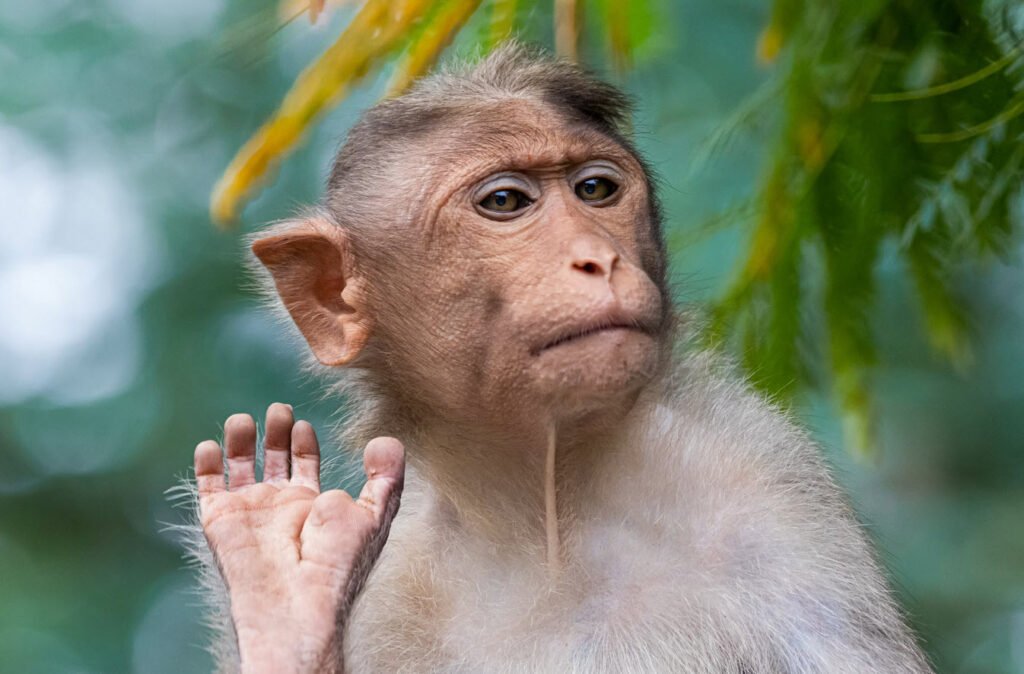
Monkeys are fascinating creatures that captivate us with their playful antics and intriguing behavior. Whether swinging through the trees or grooming each other, these intelligent animals never fail to amaze.
Here are some interesting facts about monkeys that highlight their uniqueness and charm.
1. Old and New World Monkeys: Monkeys are divided into two main groups: Old World Monkeys and New World Monkeys. Old World Monkeys inhabit Africa, central to southern Asia, Japan, and India, while New World Monkeys are found in Mexico, Central, and South America.
2. Largest Species of Monkey: The Mandrill is the largest species of monkey, often mistaken for an ape due to its size, measuring between 1 and 3 feet in length.
3. Smallest Monkey: The pygmy marmoset holds the title for the smallest monkey in the world, reaching a size of only 5-6 inches.
4. Monkeys Don’t Catch Colds: Unlike gorillas and chimpanzees, monkeys are immune to the common cold. So, the next time you’re sniffling, you might envy their immunity.
5. Monkey Table Manners: Monkeys have proper table manners. They never eat a banana without first peeling off its skin, showing a surprising sense of etiquette.
6. Teeth of Monkeys: Old World Monkeys have 32 teeth, while New World Monkeys have 28 teeth.
7. The Howler Monkey: If you hear a loud howl from a distance of 3 miles or more, chances are it’s a howler monkey. These monkeys are known for their vocal prowess and are considered the loudest land animals.
8. Monkey Brain as Delicacy: Unfortunately, in some regions of South Asia, China, and Africa, monkey brain is considered a delicacy, although it’s not widely accepted or practiced.
9. Mutual Grooming: Monkeys take grooming seriously. Some species have a unique arrangement where one monkey acts as a “barber” to another, removing bugs from their fur. In return, the barber monkey gets a tasty treat, creating a give-and-take relationship.
10. The Unique Spider Monkey: Spider monkeys have a remarkable ability to hang from branches using only the tip of their tail. They are also skilled at swinging from branch to branch, setting them apart from other monkeys.
11. Beware of Aggression: When a monkey yawns or grins by pulling its lip, it’s a sign of aggression. It’s best to give them their space when displaying these behaviors.
12. Cold Survivors: Japanese macaques, also known as snow monkeys, can endure temperatures as low as -10 degrees Celsius, showcasing their ability to survive in freezing conditions.
13. Endangered Monkey Species: The Golden Lion Tamarin, characterized by its striking orange mane, is sadly listed as endangered due to human activities such as poaching, mining, and urbanization.
14. Mating Calls: Female monkeys emit loud, distinctive calls during mating. Some scientists believe this helps the male partner reach climax, particularly observed in the Barbary macaque species.
15. The White-faced Capuchin: Monkeys can be both mischievous and helpful. Capuchin monkeys are trained to assist quadriplegic individuals by opening bottles, washing faces, and even operating microwaves.
16. Breeding Time: Unlike many animals that have specific breeding seasons, most monkeys can breed at any time of the year, showing their reproductive flexibility.
Monkeys are a testament to the diverse and wondrous creatures that inhabit our planet. Their presence reminds us of the intricate web of life and our position at the top of the ecological pyramid. Without them, the world would be a much
less vibrant and captivating place. So, let’s appreciate these remarkable animals and cherish the uniqueness they bring to our world.
Chi hoo ooh! That’s “cheers” in monkey’s language!
